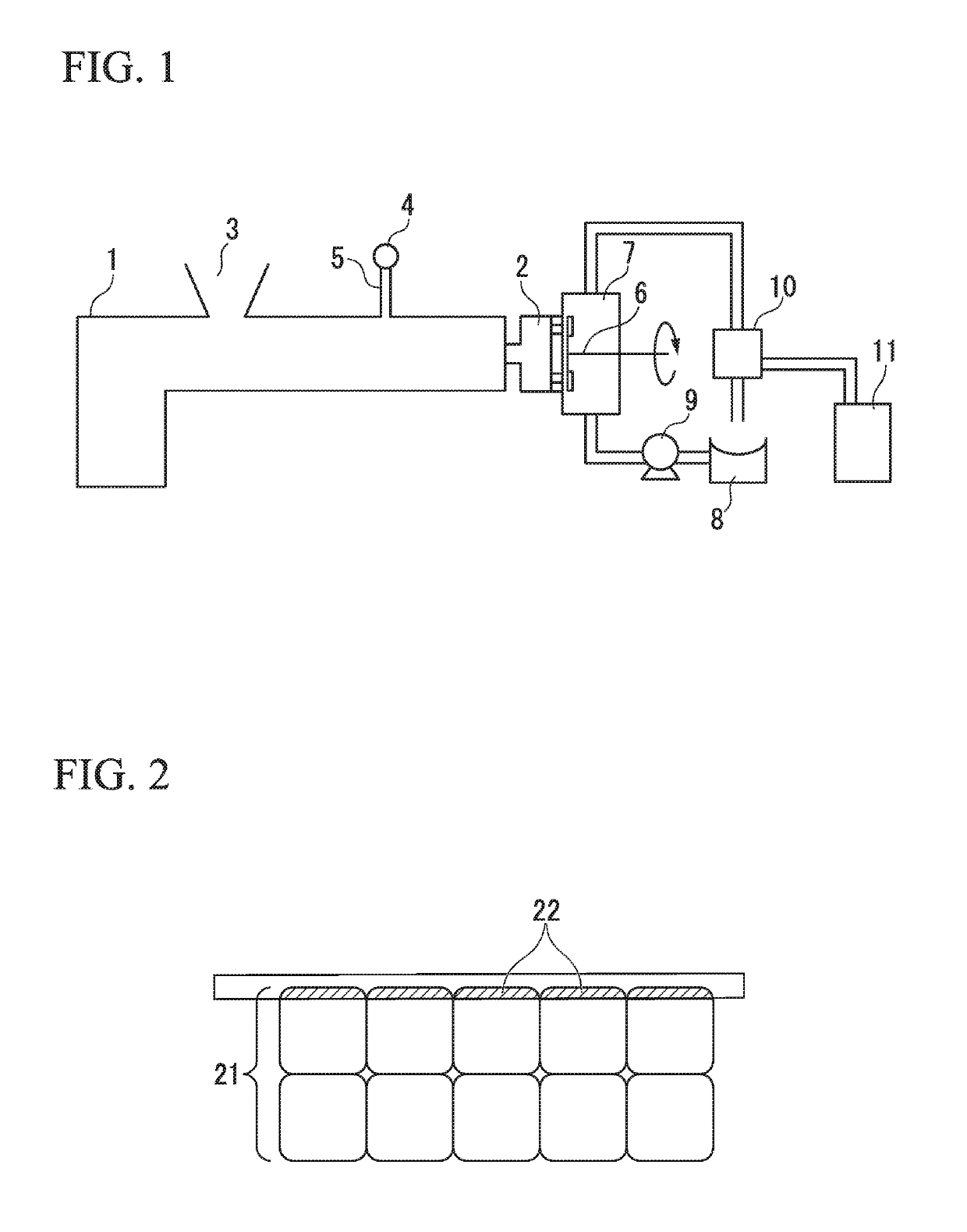Foamable polystyrene resin particles and polystyrene resin prefoamed particles
a technology of polystyrene resin and foaming agent, which is applied in the field of foaming polystyrene resin particles and prefoamed particles of polystyrene resin, can solve the problems of mechanical strength, deterioration of working environment, volatilization of foaming agent, etc., and achieve excellent flame retardancy and heat insulating properties, excellent heat insulating properties
- Summary
- Abstract
- Description
- Claims
- Application Information
AI Technical Summary
Benefits of technology
Problems solved by technology
Method used
Image
Examples
example 1
Production of Foamable Polystyrene Resin Particles
[0163]A mixture, which was obtained by evenly mixing in advance 7 parts by mass (corresponding to 3.5 parts by mass in terms of the amount of a flame retardant) of a polystyrene resin master batch containing 50% by mass of tetrabromobisphenol A-bis(2,3-dibromo-2-methylpropyl ether) (manufactured by DAI-ICHI KOGYO SEIYAKU CO., LTD.) as a flame retardant with 0.3 parts by mass of fine talc powder based on 100 parts by mass of polystyrene resin (manufactured by TOYO STYRENE CO., LTD., product name “HRM-10N”) as a substrate resin by using a tumbler mixer, was supplied into a single-axis extruder having a diameter of 90 mm at a rate of 160 kg / hr. After the resin was melted by heating, as a foaming agent, 6 parts by mass of isopentane based on 100 parts by mass of the resin was pushed into the extruder.
[0164]Subsequently, while the resin and foaming agent were kneaded in the extruder, cooling was performed such that the resin temperature a...
example 2
[0222]A foam-molded article that was foamed 67-fold in terms of the foaming factor was produced in the same manner as in Example 1, except that tetrabromobisphenol A-bis(2,3-dibromopropyl ether) (manufactured by DAI-ICHI KOGYO SEIYAKU CO., LTD.) was used in the same amount, as a flame retardant.
example 3
[0223]A foam-molded article that was foamed 67-fold in terms of the foaming factor was produced in the same manner as in Example 1, except that tetrabromobisphenol A-bis(allyl ether) (manufactured by DAI-ICHI KOGYO SEIYAKU CO., LTD) was used in the same amount, as a flame retardant.
PUM
| Property | Measurement | Unit |
|---|---|---|
| decomposition temperature | aaaaa | aaaaa |
| particle size | aaaaa | aaaaa |
| pressure | aaaaa | aaaaa |
Abstract
Description
Claims
Application Information
 Login to View More
Login to View More - R&D
- Intellectual Property
- Life Sciences
- Materials
- Tech Scout
- Unparalleled Data Quality
- Higher Quality Content
- 60% Fewer Hallucinations
Browse by: Latest US Patents, China's latest patents, Technical Efficacy Thesaurus, Application Domain, Technology Topic, Popular Technical Reports.
© 2025 PatSnap. All rights reserved.Legal|Privacy policy|Modern Slavery Act Transparency Statement|Sitemap|About US| Contact US: help@patsnap.com

